Mint - A Versatile Herb For Sweet And Savory Dishes

"Heaven has no rage, like love to hatred turned, Nor Hell fury, like a woman scorned." (William Congreve, English playwright) or a woman betrayed for that matter. The herb mint came about as a consequence of unbridled feminine fury unleashed by the goddess Persephone on the nymph Minthē. When the former discovered that her consort Pluto, king of the Underworld, and the nymph had been indulging in some mutual tampering, Persephone trampled Minthē to death. Pluto returned Minthē to eternal life as the herb that bears her name.
Who could not love this refreshing, up-lifting herb which is also renowned for its digestive qualities? With over two dozen or so species and hybrids, each which have gone forth and multiplied into hundreds of varieties, there is an encyclopaedic range of flavour and aroma profiles to choose from beyond the common mint (Mentha viridis).
The so-called Vietnamese mint (Polygonum ododratum) is not a member of the mint family. The word "mint" in reference to the money printing presses which are now working overtime in GFC-impacted economies isn't etymologically related to the plant either: it comes from the Latin monẽta meaning 'money'.
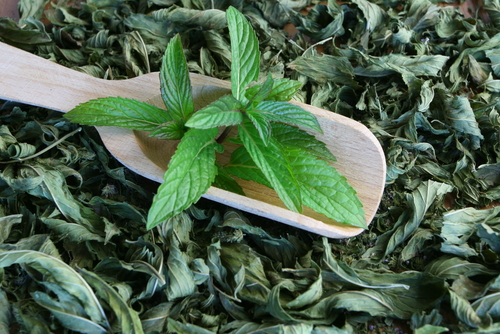
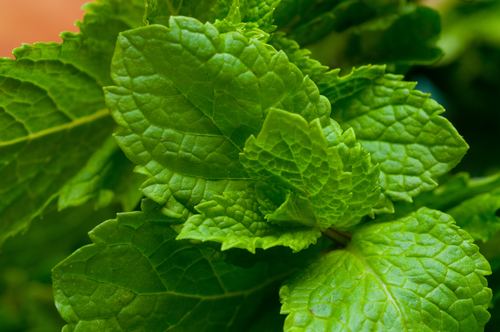
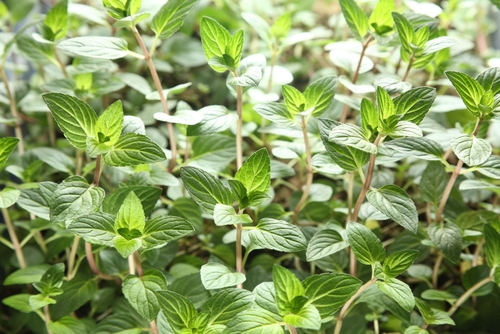
An endless choice of mints
The delicate, clean, sweet flavour of spearmint (M. spicata) has made this oldest of herbs a long standing kitchen favourite. However, equally delightful for culinary use are the citrus-scented Bergamot mints (M. citrata) which come in lemon, lime and orange variants, the exotically spicy ginger mint (M. x gentiles 'Variegata'), the apple mint (M. suaveolens) and its complex fruity variant, the pineapple mint (M. suavolens Cv 'Variegata').
Most good nurseries carry a wide range of mints and they thrive happily in pots. If you seek out rare plant nurseries, you'll find really unusual heritage varieties such as Black peppermint (M. piperita), Chocolate mint, and Vosges Mountain mint, a variety from north eastern France that has a savoury twist. There's even a Basil Mint which is also known as Bastardo. Imagine this with tomatoes!
All these mints add a sparkle to vegetables such as peas and potatoes, or in a salads. Even the most heat-dulled appetites would be tempted by a salad of cubed melon, tomato wedges and grated cucumber with a dressing of yoghurt with finely chopped mint.
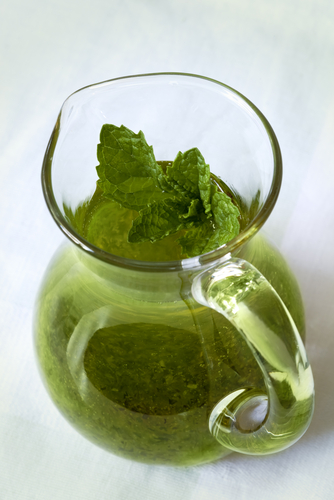
Mint & Lamb: A Classic Marriage
Mint and lamb is a classic marriage that takes many forms, from minty marinades to an accompanying mint sauce, jelly or minted fruit chutney. Fresh home-made mint sauce is easy to make and so much nicer than the lurid green pretenders on the supermarket shelves. Just strip leaves from a large bunch of mint. Chop the leaves very finely and mix it with a tablespoon of sugar. Add a tablespoon of boiling water to dissolve the sugar. Then add 3 tablespoons of good quality white wine or cider vinegar.
This herb is also brilliant with seafood. The Sicilian Crostini di Gamberi alla Menta consists of lightly fried shrimp with a bread crumb-thickened mint sauce which also incorporates parsley, anchovies and capers. Mint, basil and tomato are key flavouring ingredients in the Sardinian lobster salad, Aragosta alla Catalana.
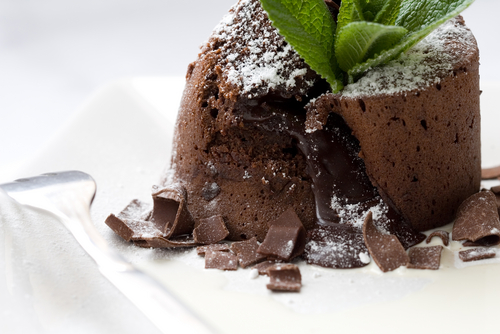
Refreshing Mint Desserts & Drinks
Mint's clean taste and digestive qualities makes it ideal for desserts. It's terrific with fresh fruit and in sorbets. There'll always be tummy room for a slice of latticed tart filled with soaked currants, candied orange peel and chopped mint. Perky mint is a perfect complement for brooding dusky dark chocolate in ice creams, brownies and cakes.
This herb is an absolute star in the refreshing drinks department. Freeze individual leaves in ice blocks for popping into drinks. Mint julep, a cocktail that originated in the American South in the 19th century and described by Captain Marryat, a British naval officer, as 'irresistible', has many variations but at its most basic comprises bourbon or brandy, mint and shaved ice.

Mint Tisanes & Teas
Equally refreshing is the Middle Eastern mint tea which is traditionally made from the fresh leaves of an extremely fragrant strain of spearmint called 'Morocco' (where it is widely grown) and the best quality green tea. Sumac berries and mint (preferably lemon mint) infused with water and served icy cold is a good heat beater too.
The Spanish make mint tea from the strongly peppermint-scented pennyroyal (M. pelegium). This mint is not recommended for those who are pregnant or suffering from kidney ailments.
The correct term for infusions made with herbs or flowers is tisanes. Strictly speaking the term tea refers only to the leaves or drinks made from the leaves of the plant Camellia sinensis. Peppermint tea, in this strict usage of the term tea, is black tea flavoured and scented with the essential peppermint oils. Some black peppermint teas include dried peppermint leaves as well.
The distinctive highly pungent yet cooling flavour of Peppermint (M. x piperita) comes from the high menthol content in its leaves. Whilst its fresh leaves can be used in cooking and drinks as well, some may find its strong flavour a little overpowering. It is commercially cultivated for making peppermint oil which is used in toothpaste and chewing gum, confectionery and a culinary essence.
FLOURLESS CHOCOLATE MINT CAKE
The peppermint essence in this cake is what gives it that characteristic 'mouth wash fresh' mint sensation. However, some friends have also liked a more subtle version where the essence was omitted and an extract of fresh peppermint leaves was used in place of the infusion of herbal tea. To make the extract, finely chop a large bunch of fresh peppermint or other mint leaves, infuse briefly in the hot water, and squeeze through muslin.
2 heaped tbspn loose leaf peppermint herbal tea
100ml hot water
300g dark chocolate, chopped
100g unsalted butter
6 egg yolks
100g caster sugar
2 tbsp Cognac (optional)
1 tbsp loose leaf peppermint herbal tea, finely ground
pinch salt
50g Dutch process cocoa, sifted
2 tspn peppermint essence
8 egg whites
Infuse 2 heaped tbspns peppermint tea in hot water for 10 minutes. Strain through a fine sieve and set aside.
In a bowl set over simmering water, melt the chocolate and the butter. Remove from heat. Beat the egg yolks with caster sugar until pale and fluffy. Stir in yolk mixture into the chocolate mixture. Stir in the Cognac (if using), the tea infusion, ground tea, salt, cocoa and mint essence.
In a clean bowl, whisk egg whites until the mixture just holds stiff peaks. Fold one third of the whites into the chocolate mixture, then gently fold the rest of the whites in.
Transfer the batter to a 25cm spring-form pan lined with baking paper. Bake in a pre-heated 180ºC oven for 30-35 or minutes until the centre is just set. Cool the cake in the pan on a rack.
This cake is lovely with fresh whole raspberries or raspberry coulis and cream.








